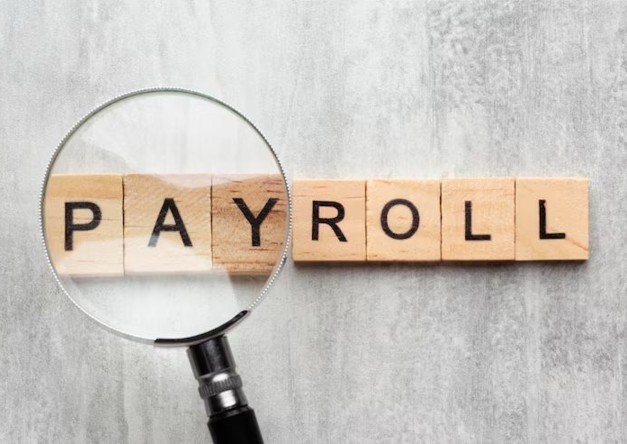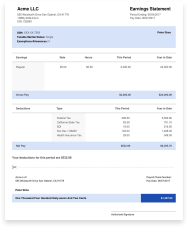Payroll Compliance for Employers Made Easy: Do’s and Don’ts
By Davis Clarkson , April 16 2025

Have you ever tried to play a game with so many rules that change all the time? That is precisely how payroll compliance for employers feels like.
It feels overwhelming when the legal requirements change too frequently. This is true, especially when you are managing the payroll alongside other business operations.
Do you know that keeping your payroll compliant does not have to be a headache? With a few helpful strategies and practical tips, you can have a fully compliant payroll.
In this guide, we will break down all you need to know about payroll compliance into simple, easy steps. You will learn practical tips alongside risk-aware strategies on payroll compliance. It will help you avoid costly fines as an employer.
- Why Does Payroll Compliance For Employers Matter?
- Payroll Laws and Regulations You Should Know?
- What Are The Key Payroll Compliance Requirements?
- How Can Employers Ensure Payroll Compliance?
- What Happens if Payroll Compliance Isn’t Met?
- Do’s and Don’Ts for Payroll Compliance for Employers
- To Wrap It Up
Why Does Payroll Compliance For Employers Matter?
A common misconception most employers have is that payroll management is just about processing paychecks. The problem with this mindset is that they fail to see the dangers of a non-compliant payroll. Proper payroll management determines a business's success and sustainability in the long run.
It is more than filling in pay dates/hours worked and ticking off regulation checkboxes. In actual fact, improper payroll management can shut down an entire organization quickly.
When employers understand payroll compliance, they are better positioned for seamless payroll practices. With this in place, employers record improved employee satisfaction. Here are three reasons why payroll compliance matters to employers:
No Legal Issues
Poor knowledge of payroll compliance increases the risk of violating payroll laws and regulations. Such violations can affect the reputation of a business. When it blows into a class action case or a lawsuit, the damage is worse.
Fines are another way a business suffers if it fails to meet the legal requirements. With the help of a payroll compliance checklist, an employer can totally reduce the risk of legal issues.
Better Financial Decisions
A business' payroll does more than pay its employees and keep records. It informs key financial analysis that is important for decision-making in the industry. Poor management of payroll would affect the integrity of economic decisions made. Also, a well-managed payroll means fewer errors in payroll practices. Employees are paid on time and with the right amount, which in turn protects the revenue.
Improved Employee Trust
Transparency is key when it comes to the relationship between employers and employees. Trust is built when employees know that their best interests are being protected. With a compliant payroll, time and resources would go into improved business operations. Otherwise, it would be spent resolving payroll-related queries.
Payroll Laws and Regulations You Should Know?
Payroll regulations vary at the state and local levels. Some payroll laws and regulations, however, are subject to federal laws. There are five key payroll governing bodies you should know about and their focus as an employer. These are:
-
Fair Labor Standards Act (FLSA): They are primarily responsible for common payroll aspects. This body covers the minimum wage at a national level. It is also involved with payroll recordkeeping and overtime rates.
-
Federal Insurance Contributions Acts (FICA): This payroll regulator functions at a federal level. They are primarily invested in tax-related payroll activities. These tax funds are specifically for Social Security and Medicare.
-
Federal Unemployment Tax Act (FUTA): This governing body is very similar to FICA. They also deal with tax-related payroll activities. However, their focus is on temporary income assistance. This tax goes into funding for workers without a job due to no fault of their own.
-
Equal Pay Act (EPA): The Equal Pay Act is a wage discrimination prevention body. Their focus is to ensure equal pay for both men and women with the same jobs in the same workplace. The payroll laws and regulations vary from state to state.
-
Davis-Bacon Act: This act moderated public works projects specifically. It requires employers and their businesses to compensate employees with wages.
Although federal bodies have general laws, states can also have their own requirements. These requirements are usually specific to the policies and standards of the state. It usually covers the content of the pay stub, the delivery method, and how long the record is kept. Employers need to be aware of all of these details in order to adhere to them appropriately.
What Are The Key Payroll Compliance Requirements?
As we have established, requirements on a payroll vary from the federal to the state and local levels. With the different governing bodies to look out for, the next step is to know the key requirements. Each of these bodies has fundamental elements typical to them across the board. Knowing these details with a payroll compliance checklist is a good step toward payroll compliance. Here are the key requirements a compliant payroll should have:
-
Employee Information: Every pay stub generated per employee must contain certain specific information. The information covers employer information like name, business address, and official contact line. For the employee, details, including the name, employee ID, and Social Security number.
-
Payment Details: Clearly state the payment details when inputting data on the payroll. These details include the gross wages, taxes, deductions, and net pay. It should also include compensation, benefits, and overtime records.
-
Time and Attendance Data: A core requirement for a payroll to be compliant is accuracy. This is core for records of work time and attendance for each employee. Accurate records of regular work hours and overtime hours must be included. In some states, the number of leave days should also be included in the payroll documentation.
-
Legal and Audit Timeline: Every payroll record has a specified timeline for recordkeeping. As a standard, the minimum prescribed duration is at least three years. All records must be available and accessible on request for auditing processes.
How Can Employers Ensure Payroll Compliance?
Payroll compliance is not a task you tick off a payroll compliance checklist permanently. It is a continuous process that gets better and better as you adapt. You need to pay attention to the payroll management process. Make sure you regularly review its status. For employers looking to achieve a compliant payroll, here are a few steps to follow:
-
Step 1: Start by developing a set of policies to govern your payroll management process
-
Step 2: Have a straightforward documentation process taking into account all payroll requirements
-
Step 3: Invest in payroll automation and select a suitable software to handle most tasks
-
Step 4: Make sure your selected software has the feature to update legal policies
-
Step 5: Oftake routine tasks from your HR team so they are focused on improvements
-
Step 6: Schedule routine and consistent audits and verifications for the entire system
-
Step 7: Have consistent training to adapt to the changing policies and technology
-
Step 8: Adopt self-service portals to improve employee accessibility to their information
If you follow these step-by-step processes, you are sure to have a complaint payroll. It also gives an obvious pathway to follow for employers without too much complexity.
What Happens if Payroll Compliance Isn’t Met?
Defaulting payroll compliance for employers is actually more common than you would think. The consequences of not meeting these requirements can be devastating for any organization. Here are some of the risks that come with it:
-
Fines and penalties
-
Damaged business reputation
-
Disruption to business operations
-
Overall organizational inefficiency
-
Potential lawsuits and legal battles
-
Reduced employee morale and cooperation
-
Poor financial planning and decision-making
Do’s and Don’Ts for Payroll Compliance for Employers
Now that we have covered the core aspects of payroll compliance, it is time to block the loopholes. Here is a list of do's and dont to help you take the right step as an employer:
Do's of Payroll Compliance
-
Update your payroll policies to reflect the latest changes in policies or requirements.
-
Always automate your processes as much as possible with the aid of payroll software.
-
Make sure audits and verifications are a critical part of your payroll routine tasks.
-
Invest strongly in your HR and payroll management team, both legally and technically.
-
Protect all data and information with the help of digital storage protection solutions.
Don'ts of Payroll Compliance
-
Avoid using manual methods for your data entry, recording, and processing
-
Never slack on compliance updates across all levels (federal, state, and local)
-
You must not neglect or undermine employee feedback or block opportunities for queries
-
Do not postpone auditing and verification activities, as these are non-negotiable checks
-
Never ignore security standards, including all forms of payroll data breaches and threats
To Wrap It Up
If you can follow these simple rules, then payroll compliance should be a walk in the park. Understanding the importance of compliance and what is required of you as an employer is key. Never compromise on policies, processes, and procedures. They are set in place to uphold a well-managed and fully compliant payroll.
Do you want to take your payroll management to a whole new level of compliance? Our pay stub generator is here to help you get started, from actionable templates to helpful guides.
Similar Articles
We’ve helped numerous individuals and businesses create professional documents! Create yours today!










